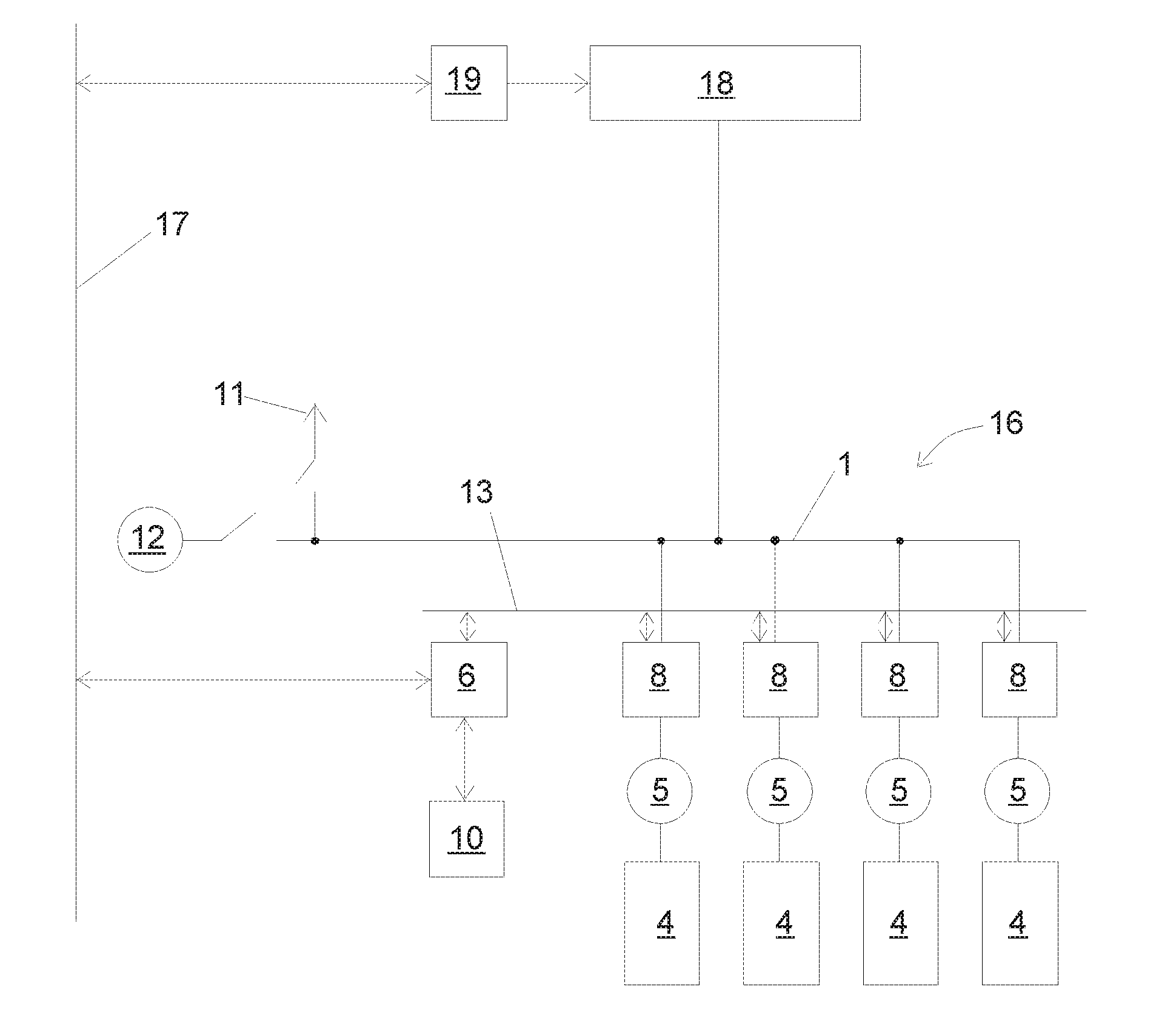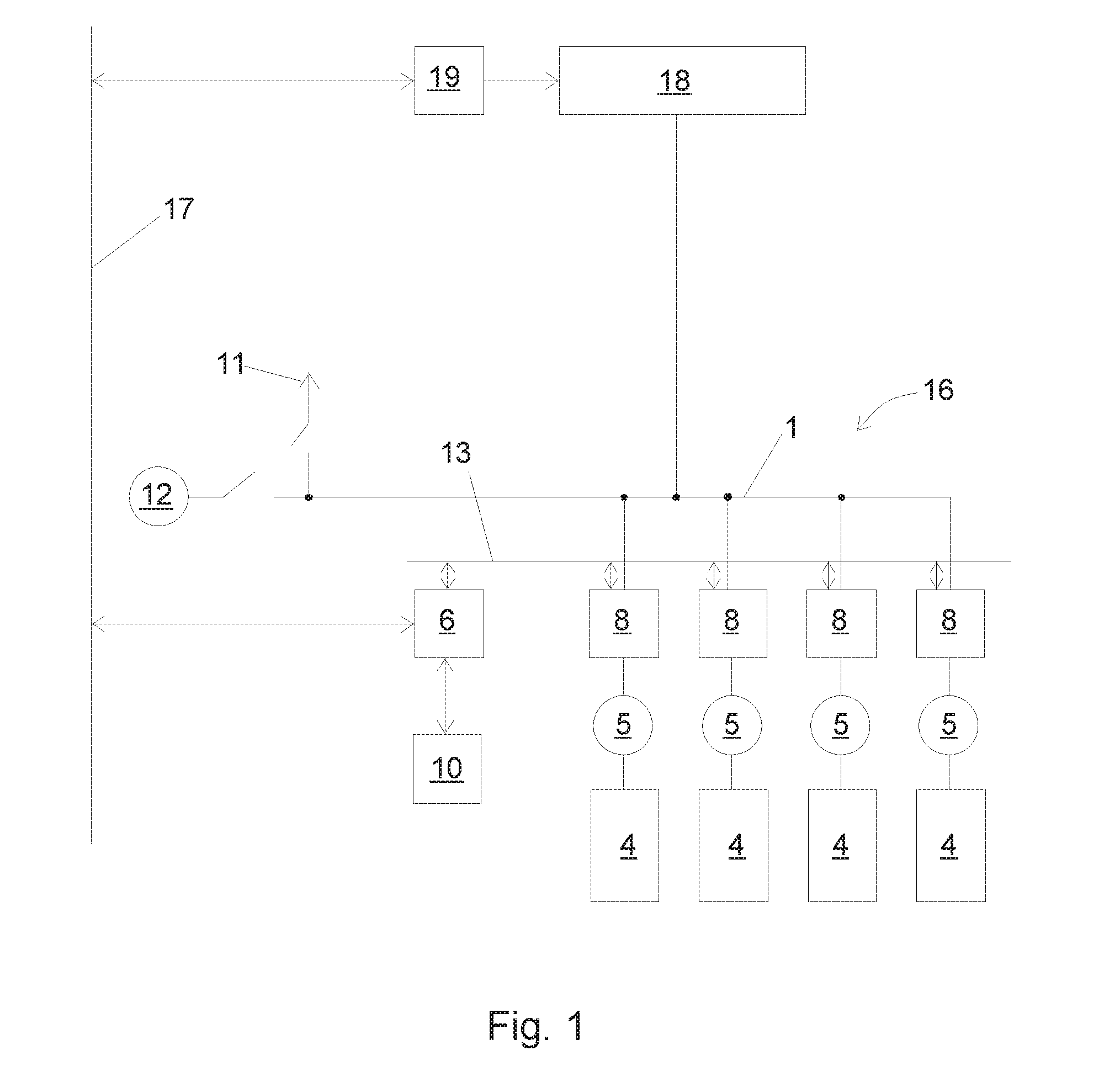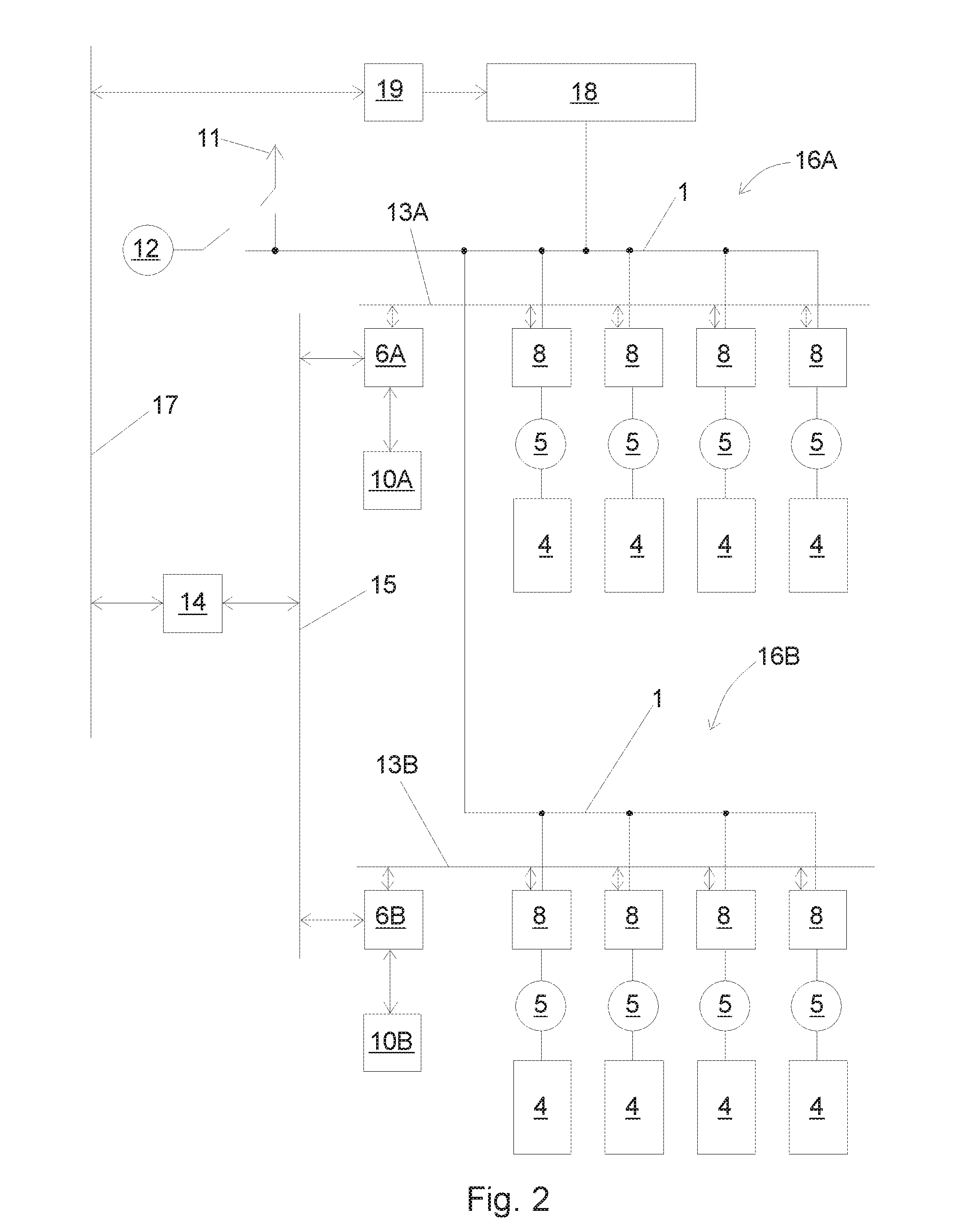Elevator installation and a method for controlling elevators
a technology for elevators and installation methods, applied in elevators, transportation and packaging, etc., can solve the problem of only approximation of elevator energy consumption, and reduce the dimensioning of the reserve power device needed, increase the transport capacity of the elevator installation being supplied with the reserve power device, and smooth the effect of power variation
- Summary
- Abstract
- Description
- Claims
- Application Information
AI Technical Summary
Benefits of technology
Problems solved by technology
Method used
Image
Examples
embodiment 1
[0029]FIG. 1 presents an elevator installation in a building, which elevator installation comprises an elevator group 16. The group controller 6 receives service requests given by elevator passengers with call-giving devices 10, and allocates via the data transfer bus 13 the service requests received to be served by elevator cars 4 belonging to the elevator group 16. The group controller 6 forms a run plan, i.e. a plan about how service requests will be distributed in a coordinated manner between the elevator cars 4 of the elevator group 16.
[0030]The group controller 6 divides the service requests between the elevator cars, and each elevator car is driven on the basis of service requests in such a way that the elevator car stops at floors according to the service requests.
[0031]The elevator installation of FIG. 1 is connected to the three-phase electricity distribution network 1 of the building The electricity supply from the public electricity network to the electricity distributio...
embodiment 2
[0050]FIG. 2 presents an elevator installation in a building, in which, differing from FIG. 1, there are two elevator groups 16A and 16B, which have their own group controllers 6A and 6B. The group controller 6A receives service requests from the call-giving devices 10A and allocates via the data transfer bus 13A the service requests received to be served by elevator cars 4 belonging to the elevator group 16A. Correspondingly, the group controller 6B receives service requests from the call-giving devices 10B and allocates via the data transfer bus 13B the service requests received to be served by elevator cars belonging to the elevator group 16B. Both the group controllers 6A, 6B are configured to form a group-specific run plan in the same way, in terms of its basic principles, as is presented in the preceding embodiment 1.
[0051]The elevator installation of FIG. 2 also comprises a power management unit 14, which is connected with a data transfer bus 15 to the group controllers 6A, 6...
embodiment 3
[0057]FIG. 8 presents two buildings 25, 26, in both of which is an elevator installation according to embodiment 2 configured in such a way that in both buildings 25, 26 are two elevator groups 16A and 16B according to FIG. 2, each of which elevator groups has its own group controller 6A and 6B. In addition, in the building 25 is a power management unit 14 according to the embodiment of FIG. 2, which power management unit is connected to the building automation apparatus 19 of the building 25 as well as to the group controllers 6A, 6B. In addition, the power management unit 14 is connected by means of an internet connection 17 to the group controllers 6A, 6B that are in the second building 26 as well as to the building automation apparatus 19.
[0058]The electricity supply in the buildings 25, 26 to devices 18 that are external to the elevator installation are controlled with the building automation apparatuses 19.
[0059]The electricity supply 11 to both buildings 25, 26 occurs with th...
PUM
 Login to View More
Login to View More Abstract
Description
Claims
Application Information
 Login to View More
Login to View More - R&D
- Intellectual Property
- Life Sciences
- Materials
- Tech Scout
- Unparalleled Data Quality
- Higher Quality Content
- 60% Fewer Hallucinations
Browse by: Latest US Patents, China's latest patents, Technical Efficacy Thesaurus, Application Domain, Technology Topic, Popular Technical Reports.
© 2025 PatSnap. All rights reserved.Legal|Privacy policy|Modern Slavery Act Transparency Statement|Sitemap|About US| Contact US: help@patsnap.com



